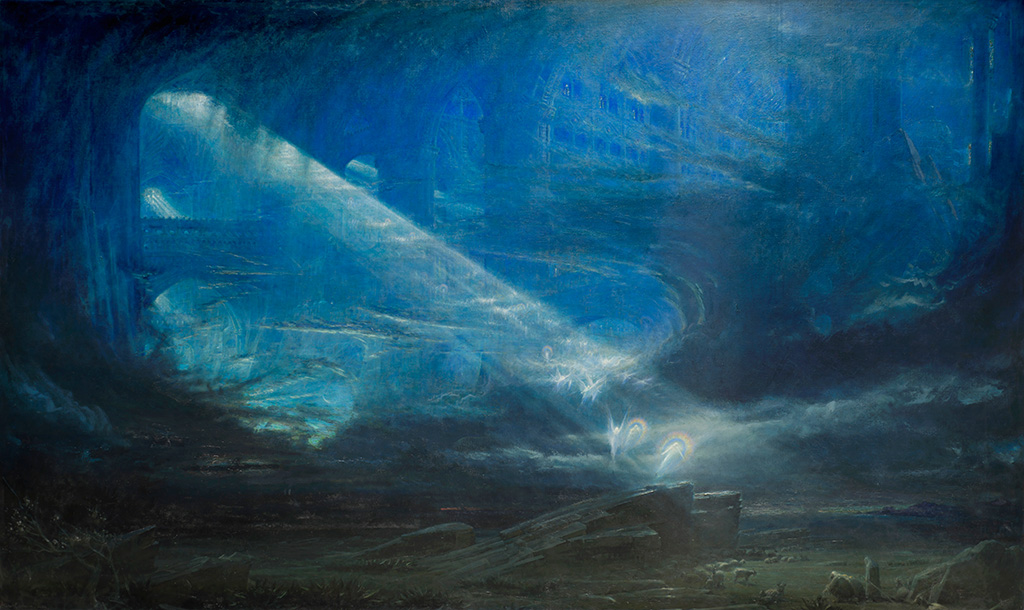Albert Goodwin, a prolific British artist who produced some 800 works in his 87-year life, is receiving a quiet reappraisal. After years of languishing in the stacks of late Victorian and Edwardian outputs, overshadowed by more resolute periods and their genres, Goodwin’s atmospheric paintings and watercolours have emerged from the shadows to intrigue once again.
At the height of his popularity Goodwin was spoken about as an heir to Turner’s mist and fog confections. His works were also referenced in comparison with some of Whistler’s tonal, nocturnal studies. Other commentaries put him with the pedantic ‘stones’ school of Ruskinian detailing. To say that all these associations are correct and utterly combined in his work is to understand the eccentricity of his approach, which assembled detailed views with fanciful air, sun and light effects. At his most prosaic he was a good painter of buildings, and at his most full-blown an experimenter with surface, tone and bold expanses of abstraction.
To some extent Goodwin’s visions are precursors to the cinematic extravagance of CGI special effects and the Harry Potter School of Victorian Gothic fantasy worlds. In this respect, and also reaching backwards, his works share something of the imaginary architectural spaces created by Piranesi.
Goodwin travelled a good deal. In particular he was a devotee of Switzerland and its alps and mists, which were first introduced to him by John Ruskin with whom he travelled extensively on sketching trips. He also repeatedly visited Italy and the limpid liquidity of lagoons of the Veneto. He journeyed to South and North Africa in search of heat and sun. In 1917 he made the long journey to visit his son in New Zealand which reminded him of Wales and its mountain region, Snowdonia. He returned to England that same year.
Gifted by the artist (or possibly the artist’s son in 1925) The First Christmas Dawn, 1894 is one of Goodwin’s more fantastical pictures with much of its very sizable canvas devoted to a Valhalla of architecture and light-beam effects that conjure the artist’s idea of heaven – all painted in hues of blue. Fairy angels, illuminated by rainbow halos are sent forth in beams of light from these architectural convolutions to help foretell the birth of Jesus. We can surmise this because of the miniature scene in the bottom right of the picture of shepherds watching their flock by night, lit by the eerie mysticism of the divine event unfolding before their eyes. Up in the arches of the imaginary heaven palace are three personages, perhaps the Magi, awaiting the moment to deliver their gifts of gold, frankincense and myrrh.
Although Goodwin’s picture aligns with the Christian story of Christmas, there is something of a mythological character to this work which appears to combine paganism and symbolism in a self-styled spiritualism.
